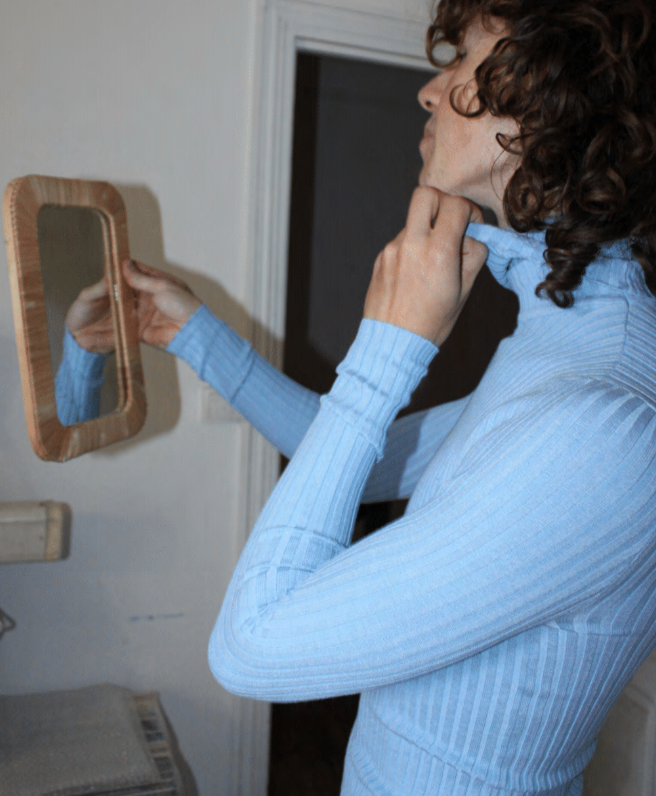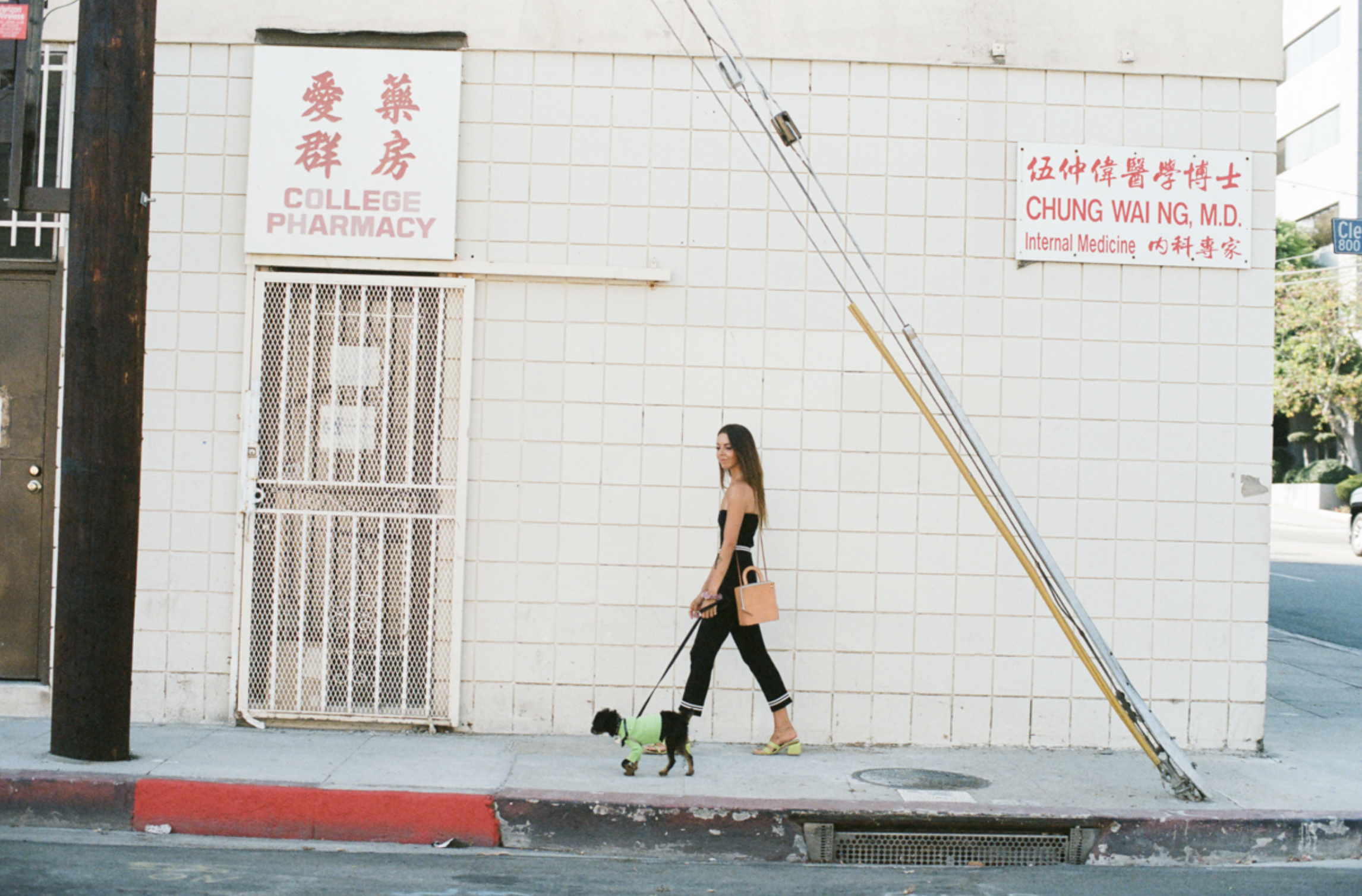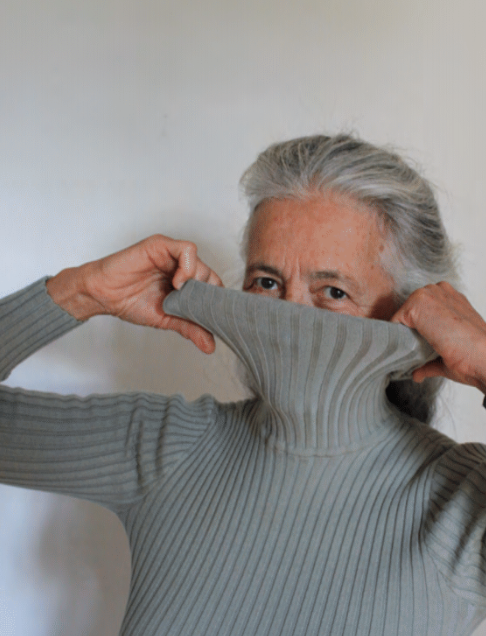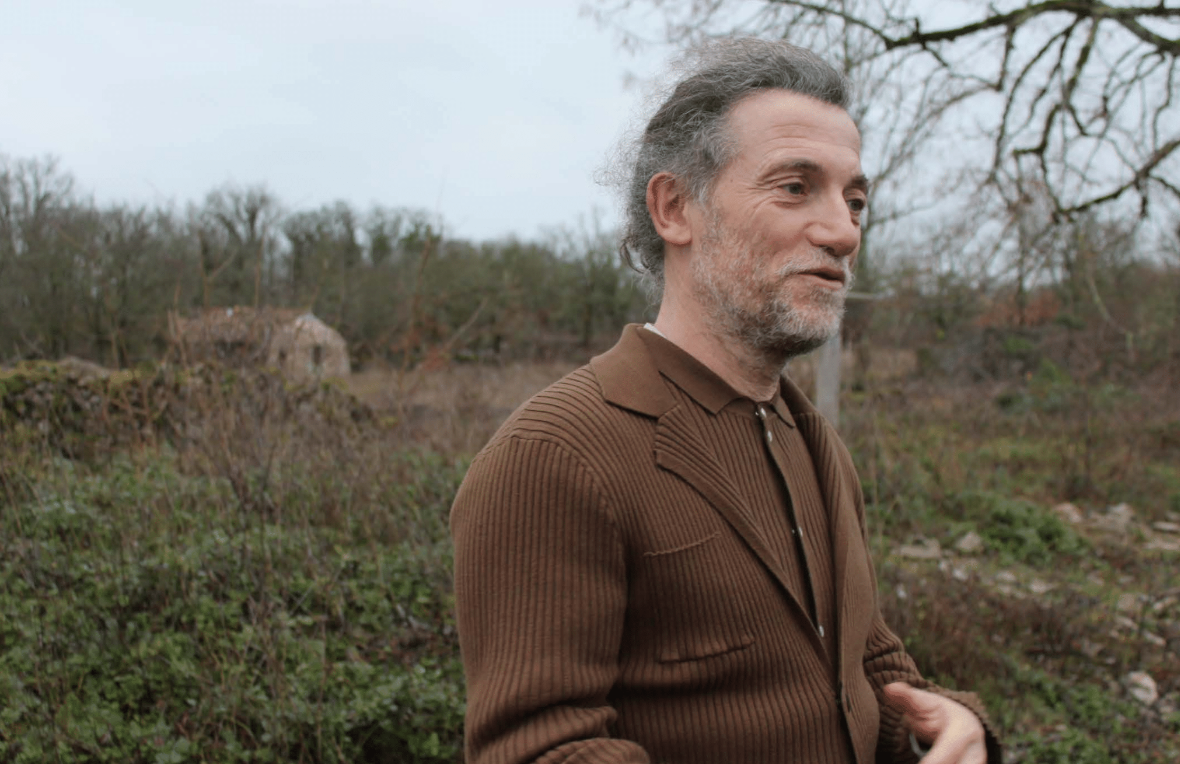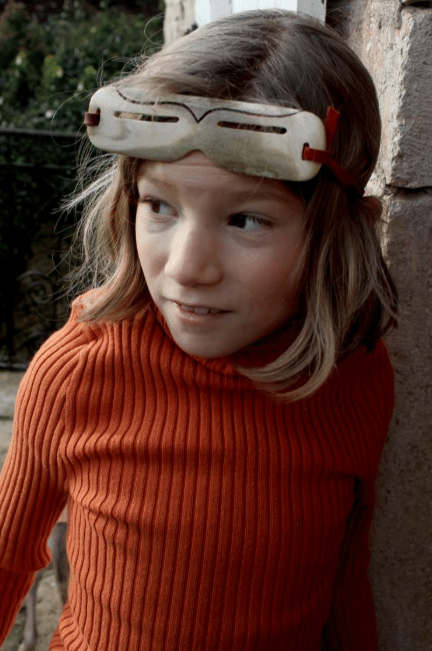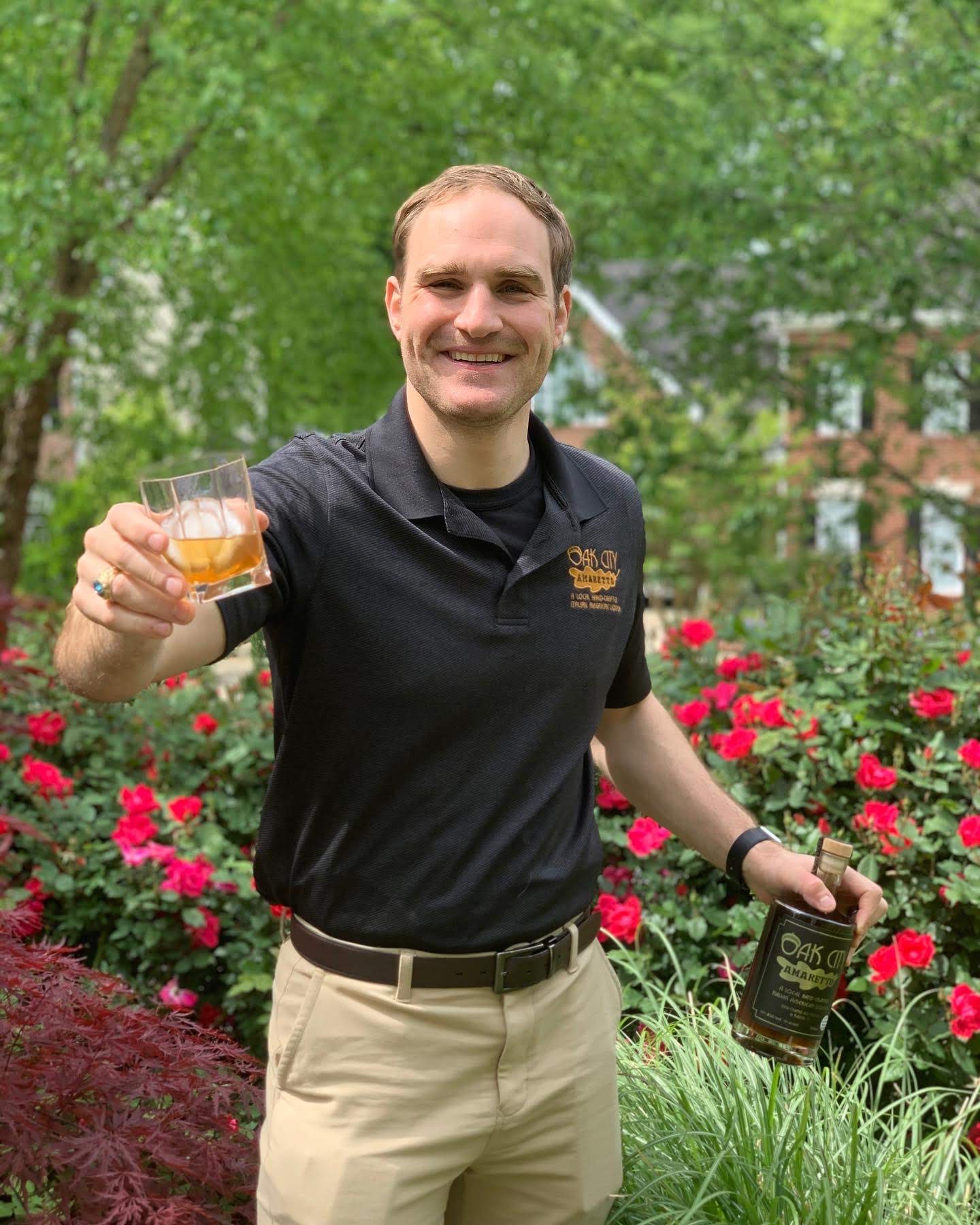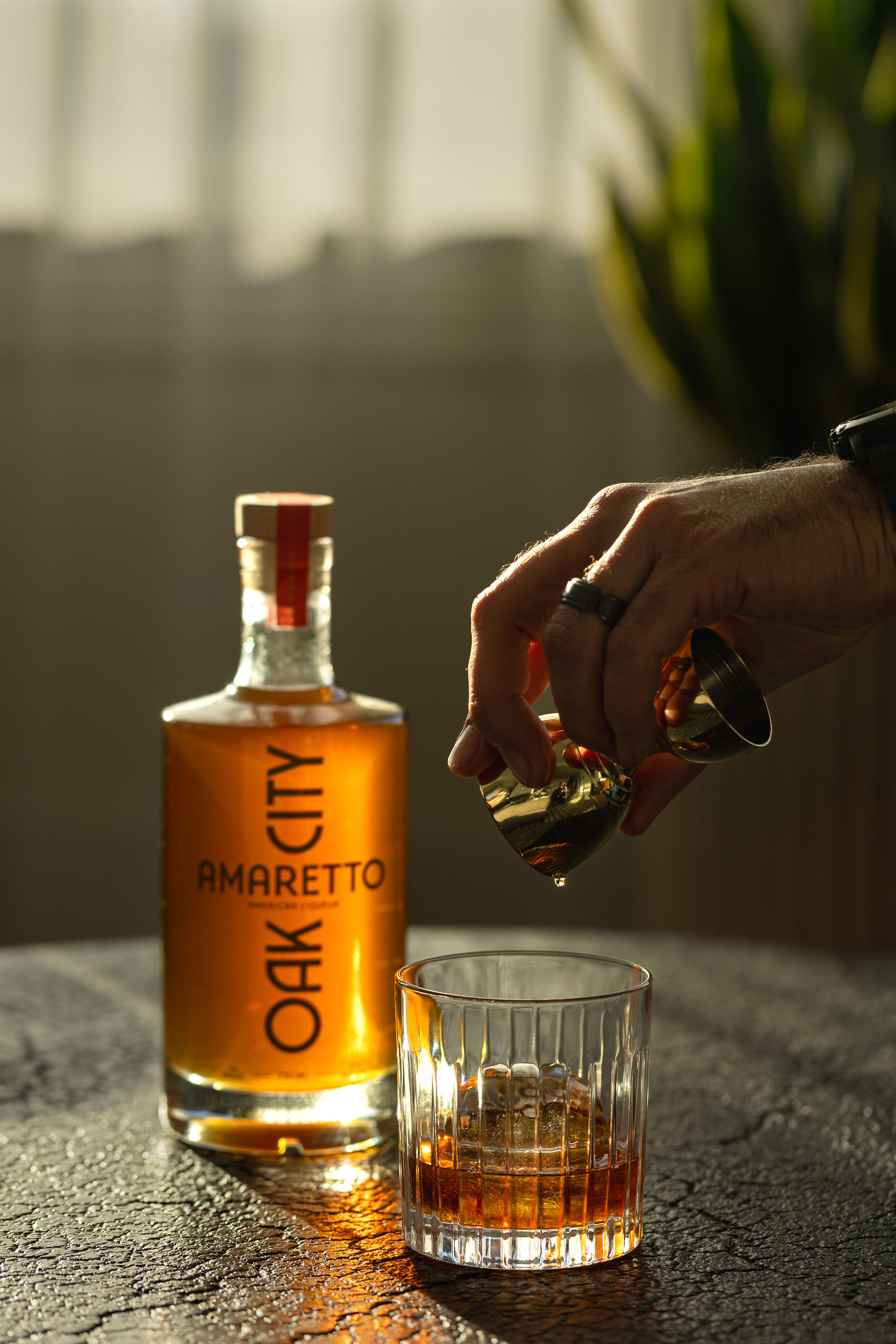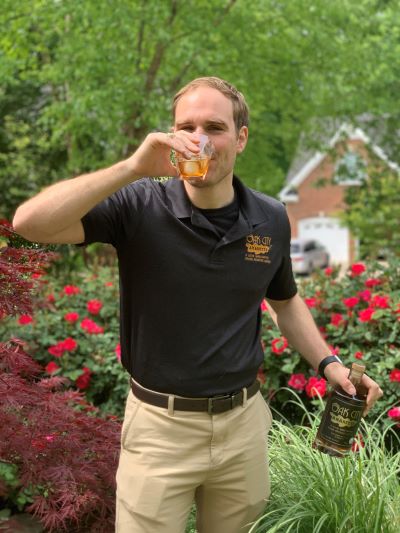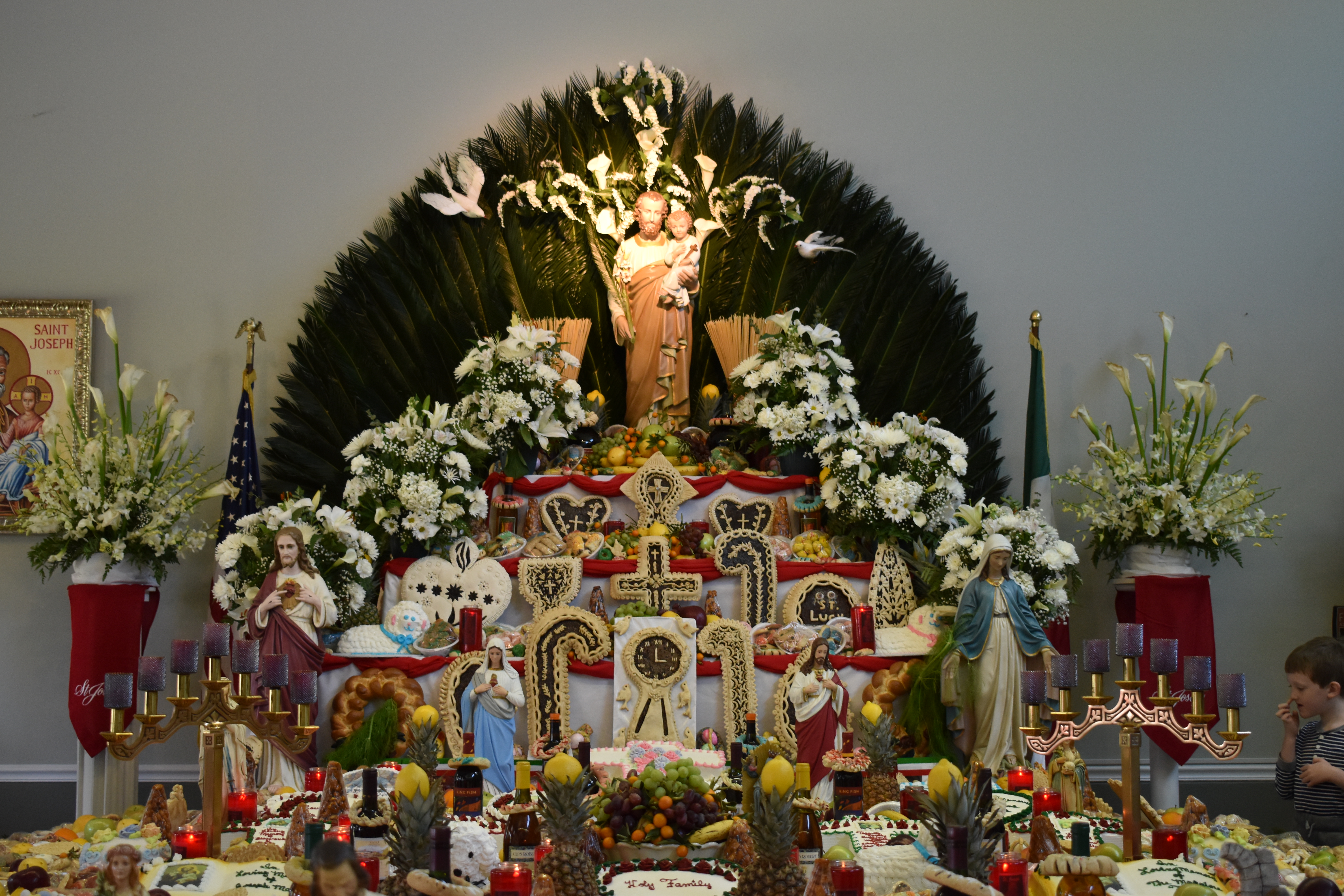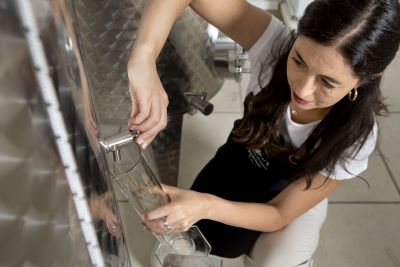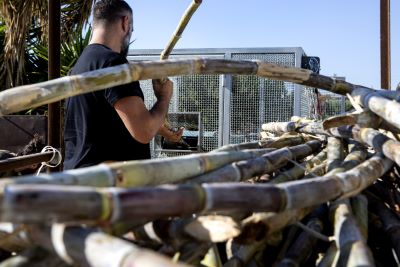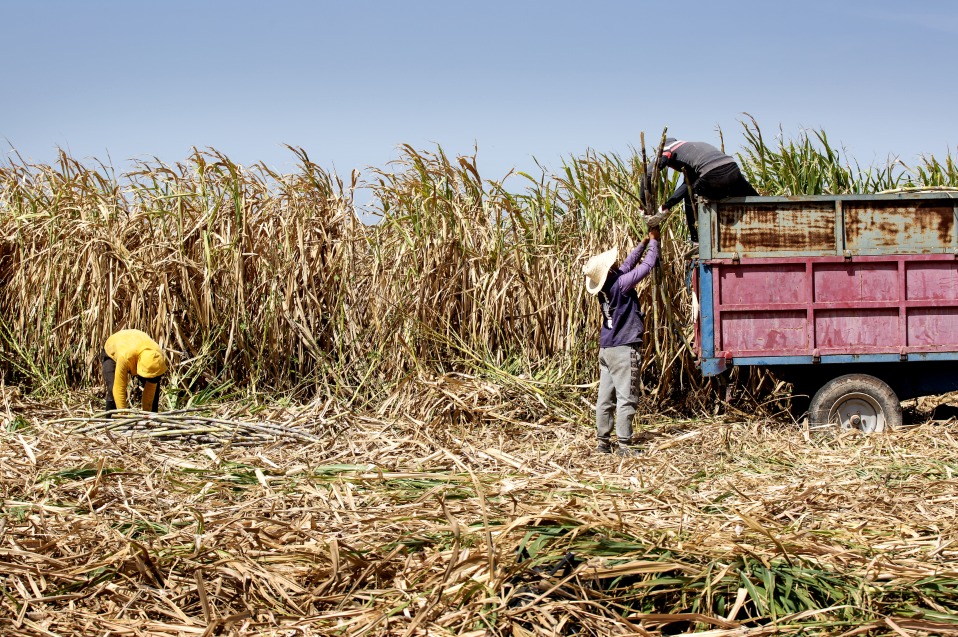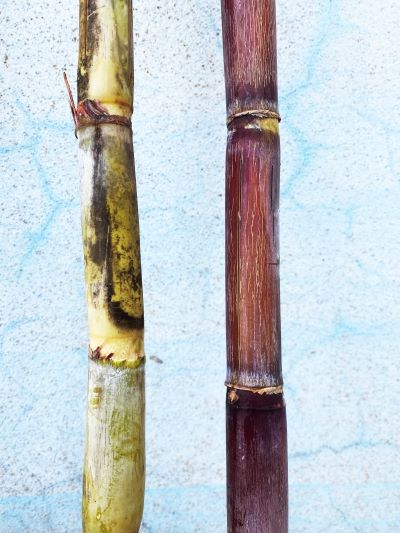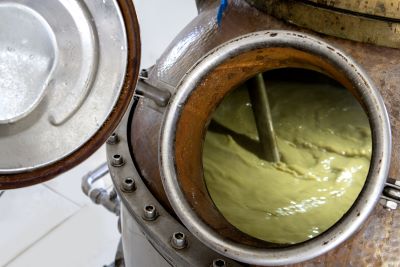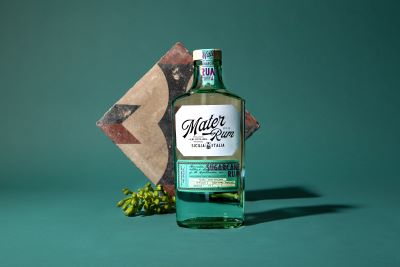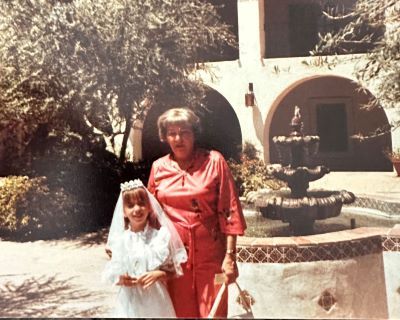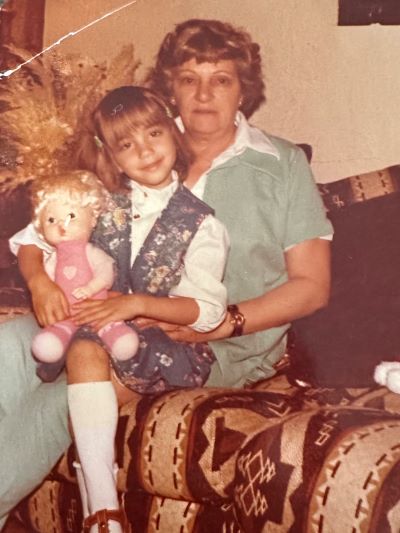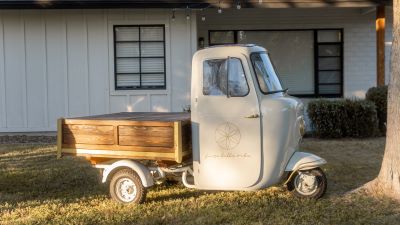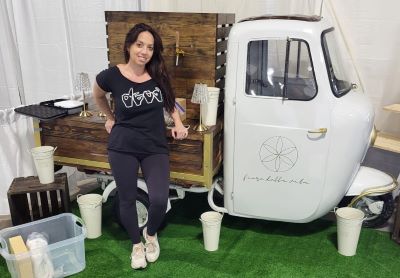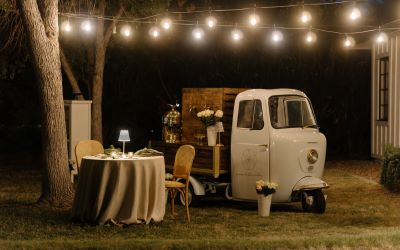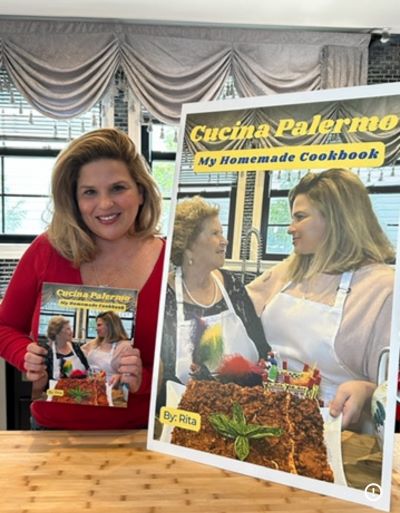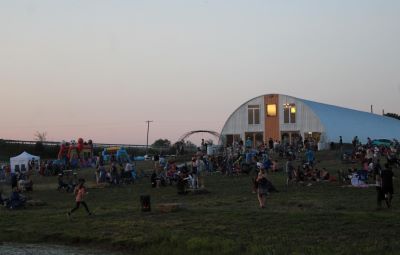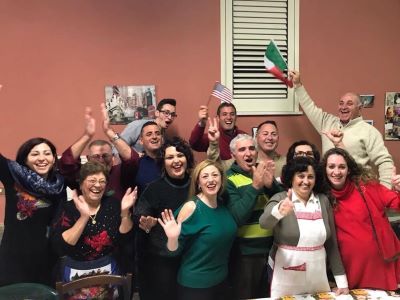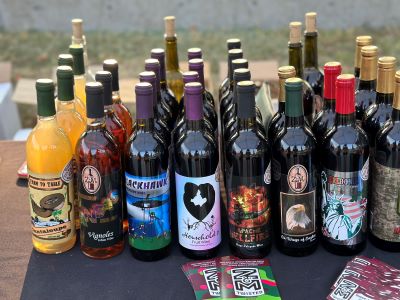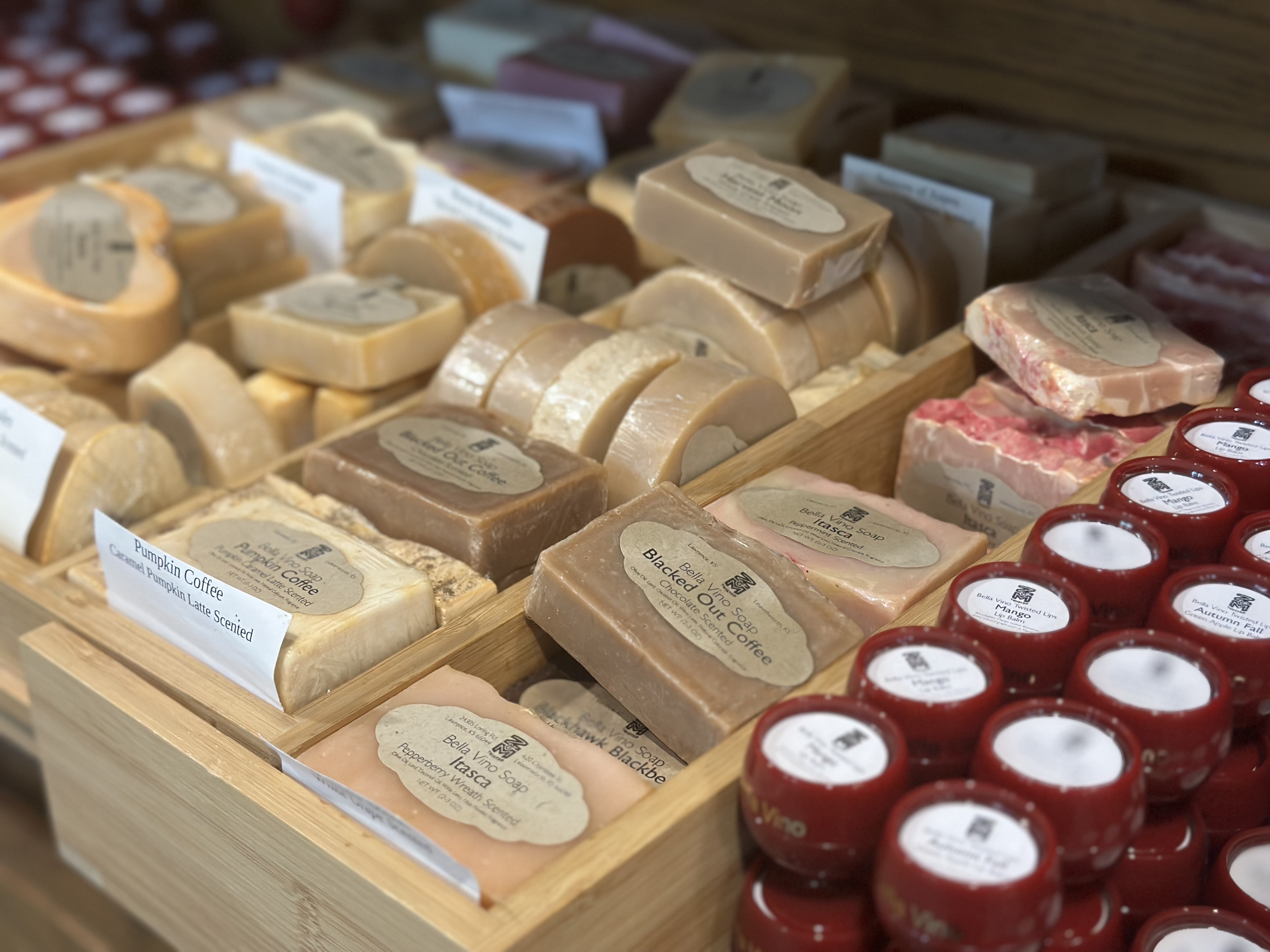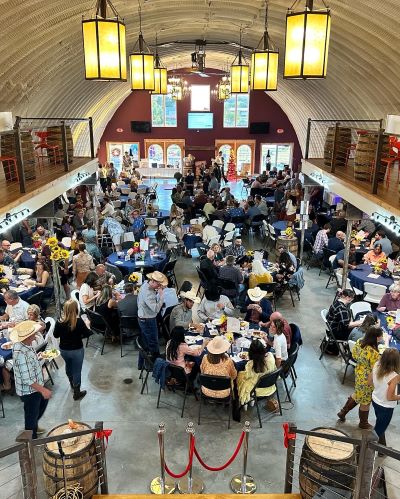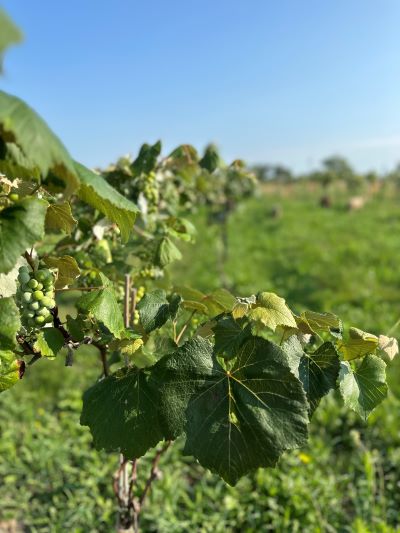Margie Raimondo arrives at our Zoom interview seated before a hillside of brightly colored houses. It's a virtual background, a photo of Prizzi, home to her father's Sicilian family. Combined with her mother's Neapolitan roots, Margie's Italian heritage has served as an important backdrop to her pursuits since she left a successful career in the tech industry.
"Ultimately, at some point, I decided, 'OK, I've done all this—check, check, check the boxes. Now I'm going to do something for me,'" Margie remembers. "And I thought the most natural thing for me to do with all of my great accolades and degrees was to be a politician or a professor."
She looked into a Ph.D. program in public policy and got so far as to request sponsorship when it hit her: She didn't want that life.
She had recently gone through a divorce and needed to heal. It was time to take care of herself and reflect on what she actually needed. "And there was this little nudge that kept saying, 'Go back to your roots,'" she says.
She remembered being six years old and running around her family's garden, their communal living, and gathering around the table to share good food.
"That just brought joy to my heart," says Margie, "So I packed up all my stuff and went to Italy."
She started her journey in Sicily, and from there, she rolled up her sleeves and got her hands dirty, planting the seeds for what would become Urbana Farmstead, a one-acre urban farm in Little Rock, Arkansas. She not only grows food but also hosts garden-based cooking and preservation classes and monthly high teas with her signature farm-grown blends.
With cookbooks to complement the offerings, it's clear this former VP of marketing has fashioned her own lifestyle brand. She shared more about her inspiration (and how her family played a part), sustainable farming practices, community outreach, challenges, and rewards.
Share your background and how that influenced you.
My father's family left Sicily and first went to Pueblo, Colorado. Eventually, they made their way to California, where my father was born. We were in the southeastern part of Los Angeles. We grew up completely poor, as you can imagine. But what happened was that my grandparents and all of the other Italians had their traditional way of living, which is what they came with. They came with the knowledge of growing your own food and preserving your own food, even though we didn't live on a farm.
What happened is they ripped out the yard and then had their chickens running around there so they could have the eggs. We had rabbits, which was good protein, and we raised all of our vegetables and fruits.
My grandmother had a basement, so we preserved everything, and my grandfather made wine. Everything Old Country basically came with them in the suitcase of their heads, and I grew up that way.
I was in my late twenties or early thirties and started raising my own family when I discovered I had been poor. But I didn't even know I was poor because I always had food everywhere. There was an abundance of food. And if you didn't have your own refrigerator full of food, you just went next door to an aunt and uncle or an adopted aunt and uncle. There was an abundance of food and people around who loved each other.
You couldn't wait until you were tall enough to get up on the chair to make pasta with Nonna and cookies during the holidays, with all the laughter in the kitchen and all the stuff that happened when anything related to food happened.
You landed in Sicily after a career in Silicon Valley. Share your journey.
I went to my cousins and said, "I don't know what I want to do with my life, but I know it has to do with food and wine."
Europe had this program called Farm Away—now called Workaway. You basically sign up to work on people's farms. They give you room and board based on the work you do.
I spent multiple months—three weeks here, a week here, two weeks there—going around to different places: Sicily, Sardinia, Basilicata, Calabria, Tuscany—and even southern Spain. I lived on farms and worked in the garden, in the farming area, and in the kitchen. I did preservation. I did all this stuff. And then I came home from that experience and thought, "I'm healed. This is exactly what I needed. I don't know my path, but I have a vision for which direction to walk in." And so I did.
I came to Little Rock, Arkansas, and started this fun urban farm. I have this one-acre farm, and I have a little market. It's a little more sophisticated than my grandparents', of course. It's a different time than it was then. I'm not immigrating with two suitcases, but I have a beautiful farmhouse kitchen, a little market, and a small little farm area. And so I am so happy because I get to grow my own food. I get to preserve food the same way I did before. I get to teach people.
I figured out what the next thing is in my life. I am so blessed that I got to be an Italian little girl growing up in an Italian family. And it's only right for me to share that with people because my purpose now is to teach people to grow their own food, how much food nurtures them, and how much food brings us together. And it's all that connection. It's like my story extended through this beautiful lineage that goes all the way back to Sicily and Campania.
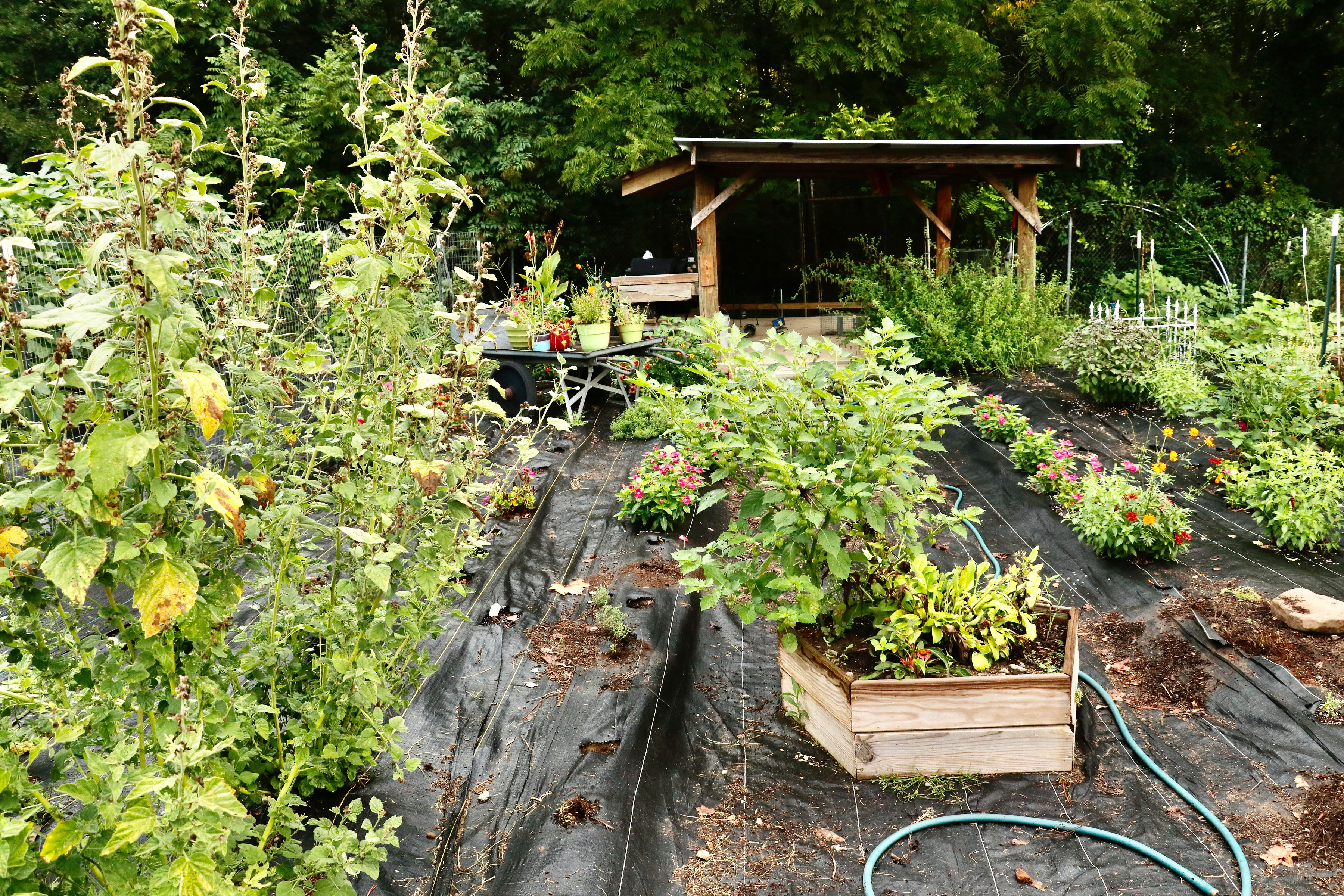
Urbana Farmstead in Little Rock, Arkansas
What sustainable farming practices do you use at Urbana Farmstead, and why are they important to you?
I do everything naturally here. We don't use bug sprays, and we don't use any fertilizer. My land is planted with things like mustard, which helps us control all of the bugs, and then radishes and beets so that they can break up the soil during the winter. I've used permaculture, the natural process of farming. I brought that practice back from all my time going back and forth to Sicily and those 18 months of living on those farms.
One thing I learned while living on farms is that whatever you do in the field will go into your body. If you're going to take your time, expense, and investment to grow your own food, then you need the healthiest source of your food. Even if you don't personally grow your food, you should be aware of that because you're basically putting that in your body.
How do you cultivate community through garden-based learning opportunities?
The pandemic was hard on all of us, but it gave me this really bright opportunity because, during that period of time, most people couldn't go to normal grocery stores. They also couldn't really get out and do a lot of socialization.
I had just moved to this community, didn't really know my own community, and had just built a small market. So, it became a meeting place where people would come, and of course, they came for produce or different food. But it also became a time when we could just hang outside and talk. It made me realize that my community is not dissimilar to the population I lived in as a child; it's a very underserved area.
The more I would talk to everybody about what I was doing and my background, the more I got to know them. And I knew during that year and a half that I was getting to know the community that I wanted to be their community garden.
If you look at where I live, the closest grocery store is eight miles one way and 11 miles the other way. And then there are two or three Dollar Generals in between that. There's no farm; I'm literally in an industrial area.
I have faith and believe that God puts us all on those paths where we should be. It was pretty obvious to me during the pandemic that it was part of my responsibility to provide this community garden.
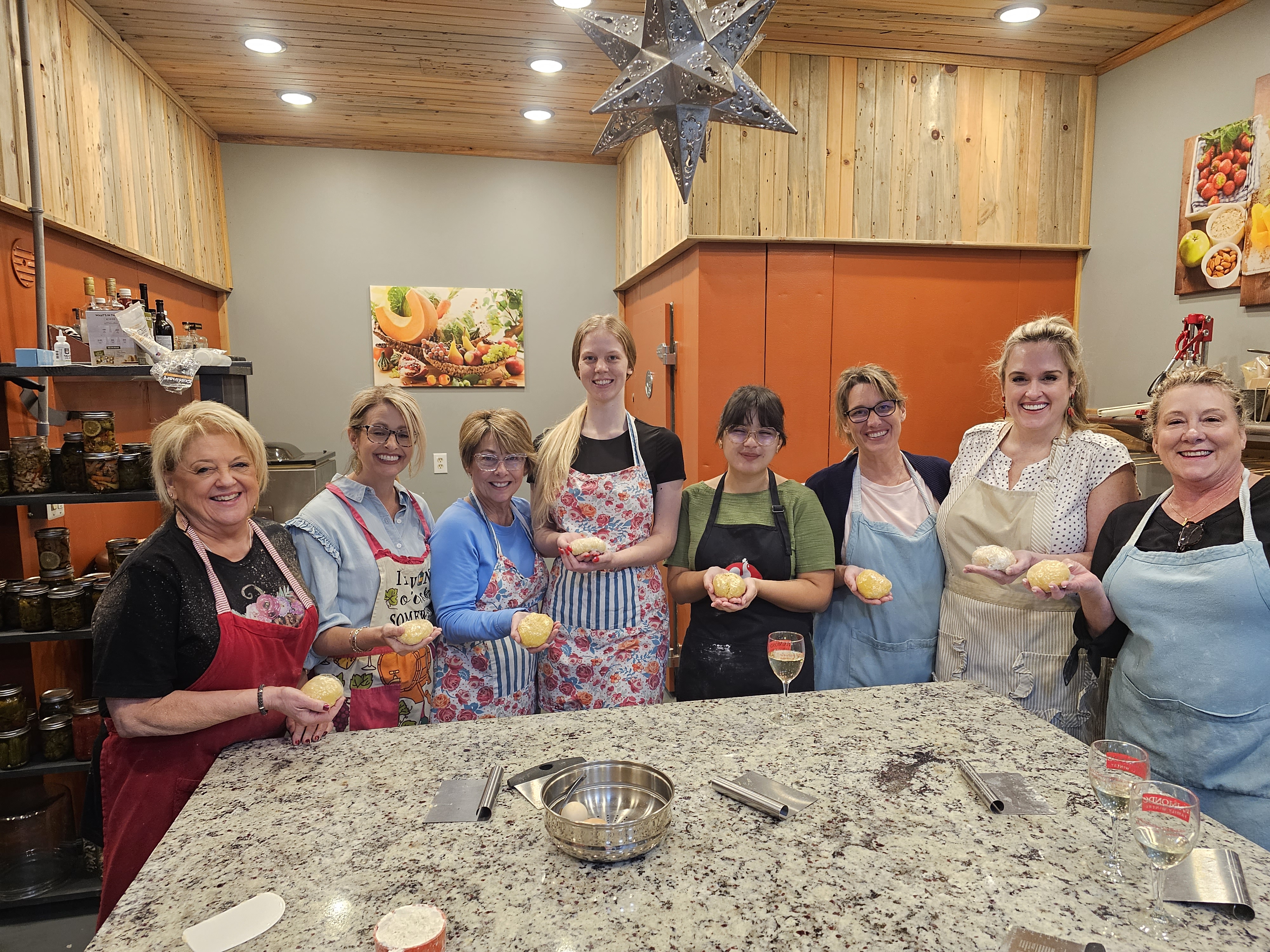
Urbana Farmstead's Simply Sicilian Cooking Club students
Tell us about your classes and how they started.
I taught youth before I did classes for adults. That happened because, during that period, the kids were homeschooling. I had this amazing kitchen with this fiber Wi-Fi network, and almost everybody in my area had no internet. So, as I got to know the families, I asked some of them, "Why aren't your kids in school?" And they said, "Oh, we don't have the internet." So I said, "Well, come over. I have this dining room sitting here where they can plug in."
During the day, for almost a full year, I'd have anywhere from six to 18 kids, who were basically strangers to me at the beginning. So they would come and do their four hours of classes in the mornings. And then, of course, I'd feed them lunch and get to know them. In the meantime, I'm farming out there.
So I'd say, "Come on, come and pick some cucumbers for lunch." They'd say, "Oh, I don't eat cucumbers." And I said, "Really? Do you like pickles?" They'd say, "Well, yeah, I love pickles." So, I'd say, "Well, then you eat a cucumber."
I realized during that process I could do a garden-based learning class, which could be an afterschool program, and I could start teaching these kids about growing their own food. Just simple stuff, like using celery and making little cars, and fun things they could learn how to do. So that's how I started with my program, The Root of Change.
After that, I realized you can't just teach the kids because then they go home, and they try to get their mom to do it, and their mom's like, "What? I don't know much about fresh anything." Because they're buying their food from Dollar General.
I started extending my classes to adults, and now I do cooking classes: Simply Sicilian Cooking Club. I have adults and children, and I teach all kinds of different classes. So that's really how it all evolved.
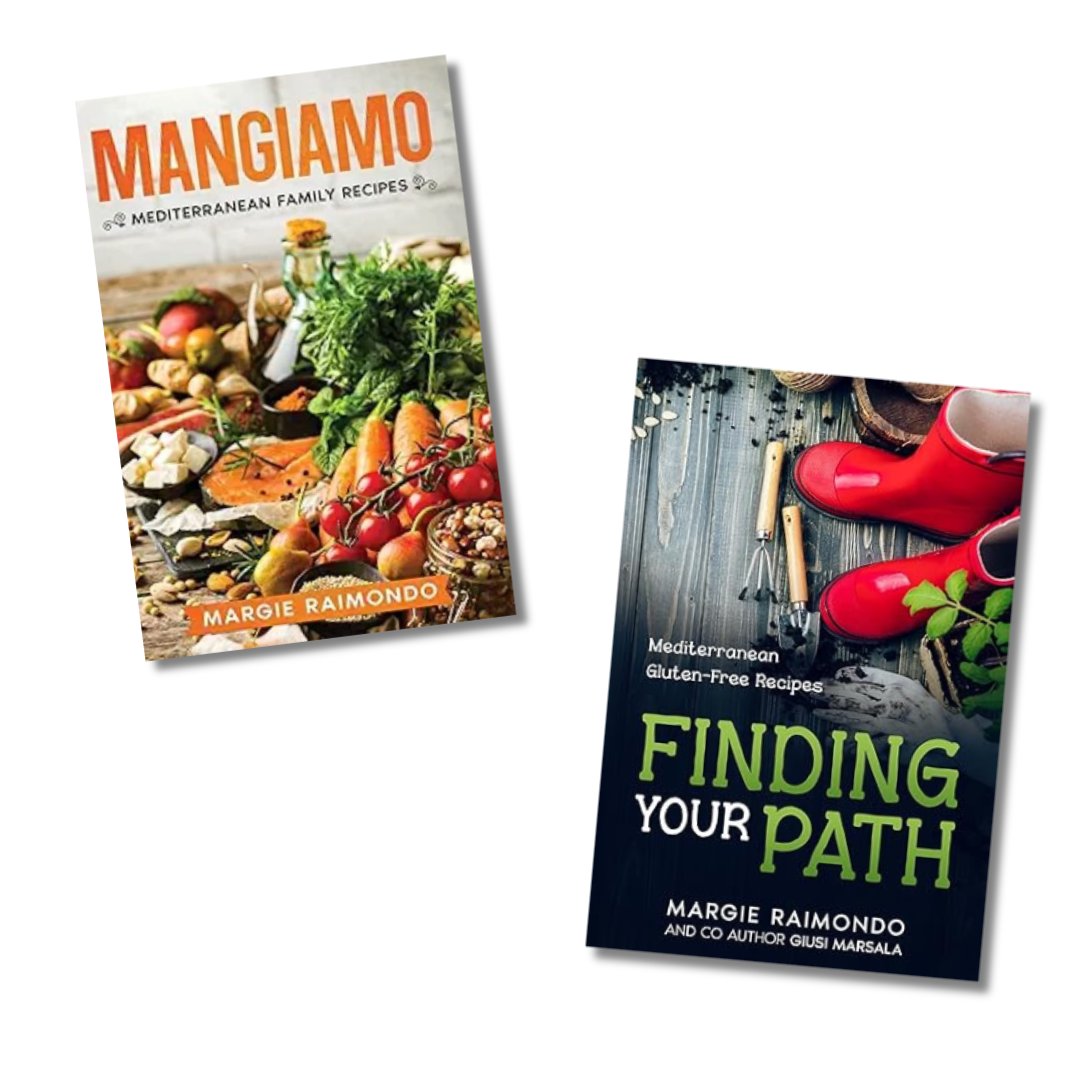
Describe your cookbooks: Mangiamo and Finding Your Path.
Mangiamo was published in 2023. It is a combination of my family's recipes—Napolitano and Sicilian—and weaved in are some of the recipes from the families I lived with while living in Italy and Spain. So I call it my family recipe book because a lot of those people that I lived with are definitely now part of my family. It was great because it showed how regionally different pizzas, pasta dishes, and breads are. And people really liked that.
After I started releasing my book, a lot of people said, "Well, I love your book, but I'm gluten-free."
I have gluten sensitivity myself, as do my two daughters and one of my grandchildren. So I said, "You can adapt many of my recipes from Mangiamo." But in the meantime, I decided that I was going to go ahead and do a book focused on gluten-free.
I have a cousin in Sicily (Giuci Marsala) who's a full-on celiac. So I partnered with her and said, "Hey, Giuci, let me tell your story, and then let's publish this together."
So, Finding Your Path is still family recipes. It's not only gluten-free but also targeted toward people with celiac disease. Plus, I wrote a resource guide for what kind of products and brands to use.
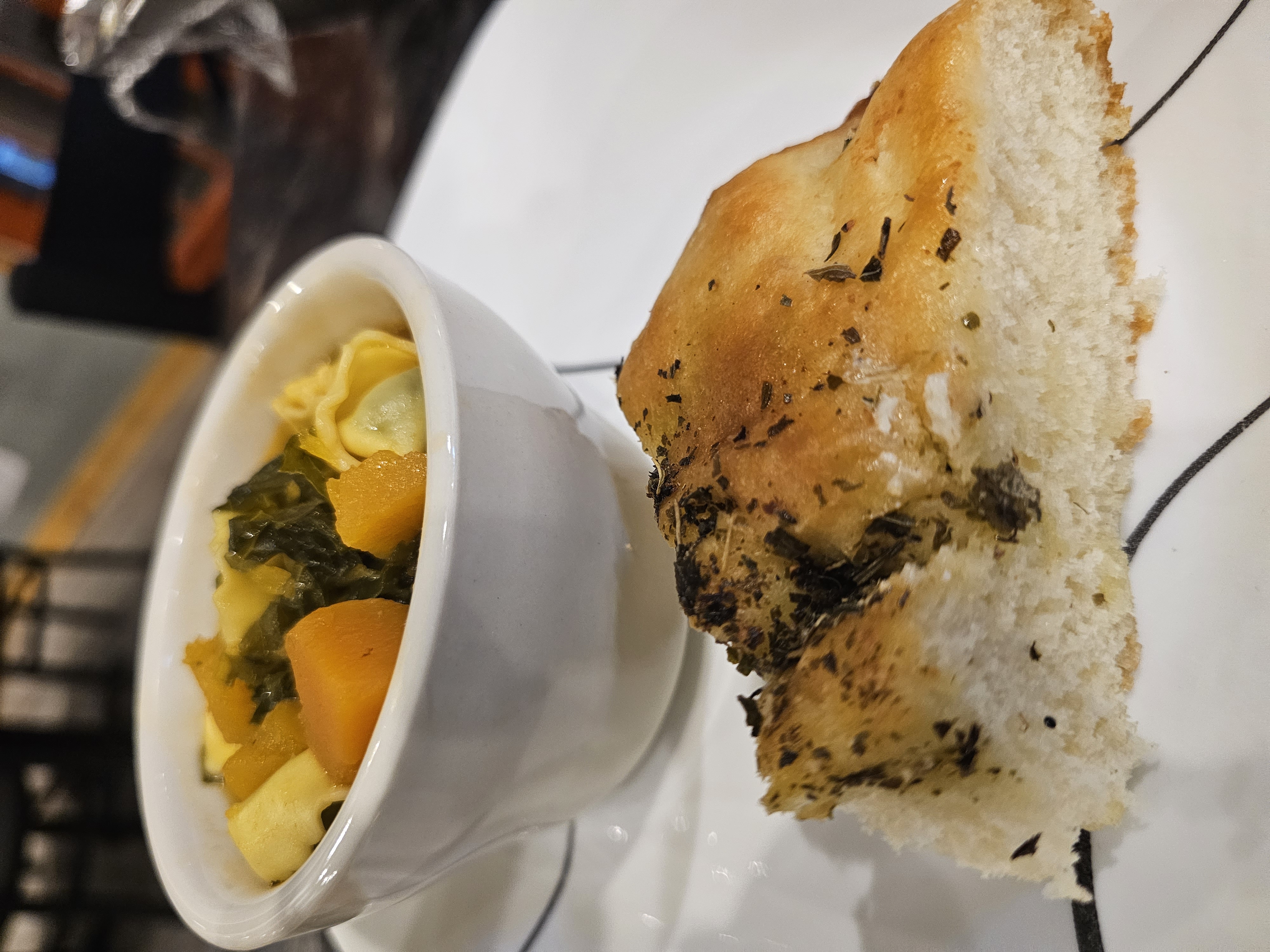
Urbana Farmstead's high teas feature a four-course meal.
Can you share more about your monthly high tea events?
It's high tea on the farm, which means it's basically farm-to-table. It's four courses. The Queen wouldn't approve of it, I'm sure of that because it's not your traditional English type of dainty thing. It's what you would consider Mediterranean-style cuisine.
I start out at the beginning, usually with some kind of homemade Italian pastry. And then we go from that. That's the first course.
For the second course, I always do a farmhouse soup with focaccia. And it's always seasonal, so it's like, "Go out in the garden and pick whatever you have, and that becomes a soup."
The third course is little sandwiches, but it's not those little dainty, sweet cucumber sandwiches. It's Mediterranean. So often, you'll get a tray of bruschetta, and there'll be different toppings on them, like a tapenade, or you might get a sausage bite with a bit of mozzarella.
The final course is petite desserts of some sort. And that varies depending on the season. So it's four courses.
You book the table, and you pick the tea. I grow 75% of the herbs that go into the tea in the garden, so you get to come and pick one of my blends. Once you book the table, you can stay there as long as you want. And then I serve you a course at a time.
It's a lot of fun. I love doing it. I get to be so creative.
What are some of your biggest challenges?
The biggest challenge is that, from where I sit in this industrial area, people sometimes drive past me instead of stopping. It's taken me a couple of years—the first two years being very trial and error—to realize I am a destination. They have to know about me and commit to come find me.
It's beautiful. You go through these iron gates and say, "Voila, I'm here!" But you have to go down a road with car lots all around me.
But I overcame it by saying, "You know what? You just have to be a destination." And that's OK; my business is based on that.
What's been most rewarding?
My most rewarding is two things. I'm going into the fourth year of my kids' program, and I have some of the kids from four years ago, and they're growing up. They started out 10 and 11 years old, and now they're like, "Ms. Margie, can I help you? Do you have a job?" So I use them when I do high tea. They might be one of the servers, or they might be cooking in the back with me. I love that because these kids probably had between zero and 10% opportunity, and I have really seen their lives transform.
I feel blessed by that. Now I feel complete. This is what I'm supposed to be doing. That's probably my number one thing, and I'm anxious and excited to see where they all go and who will rise up next.
The other thing I'm very proud of is that I've introduced Arkansas to a way of thinking about Mediterranean. I use the word Mediterranean all the time, so there's context around it, and they understand how that's healthy. They don't think it's just a diet.
I always stress, "This is not a diet, folks; this is a lifestyle." Not only is the food important, but having food at the table makes it important because just eating while walking around, doing something in the car, or sitting in front of the TV is unhealthy.
You could eat an apple, but if you eat it in front of the TV, it's not healthy anymore. Health is when you sit down, have people around you, and have a conversation.
I'm pretty proud of that because it's moving the needle. It hasn't always been easy, but I'm starting to see some real traction.
I had a couple of key administrators from the University of Arkansas come to Sicily with me in October. Now, we have an exchange program between the University of Arkansas and one of the universities in Sicily. They're going to start doing student and faculty exchanges. That's a big one right there.
I picked up the ball and ran with it. This is what I'm supposed to be doing, and I'm going to keep doing it.
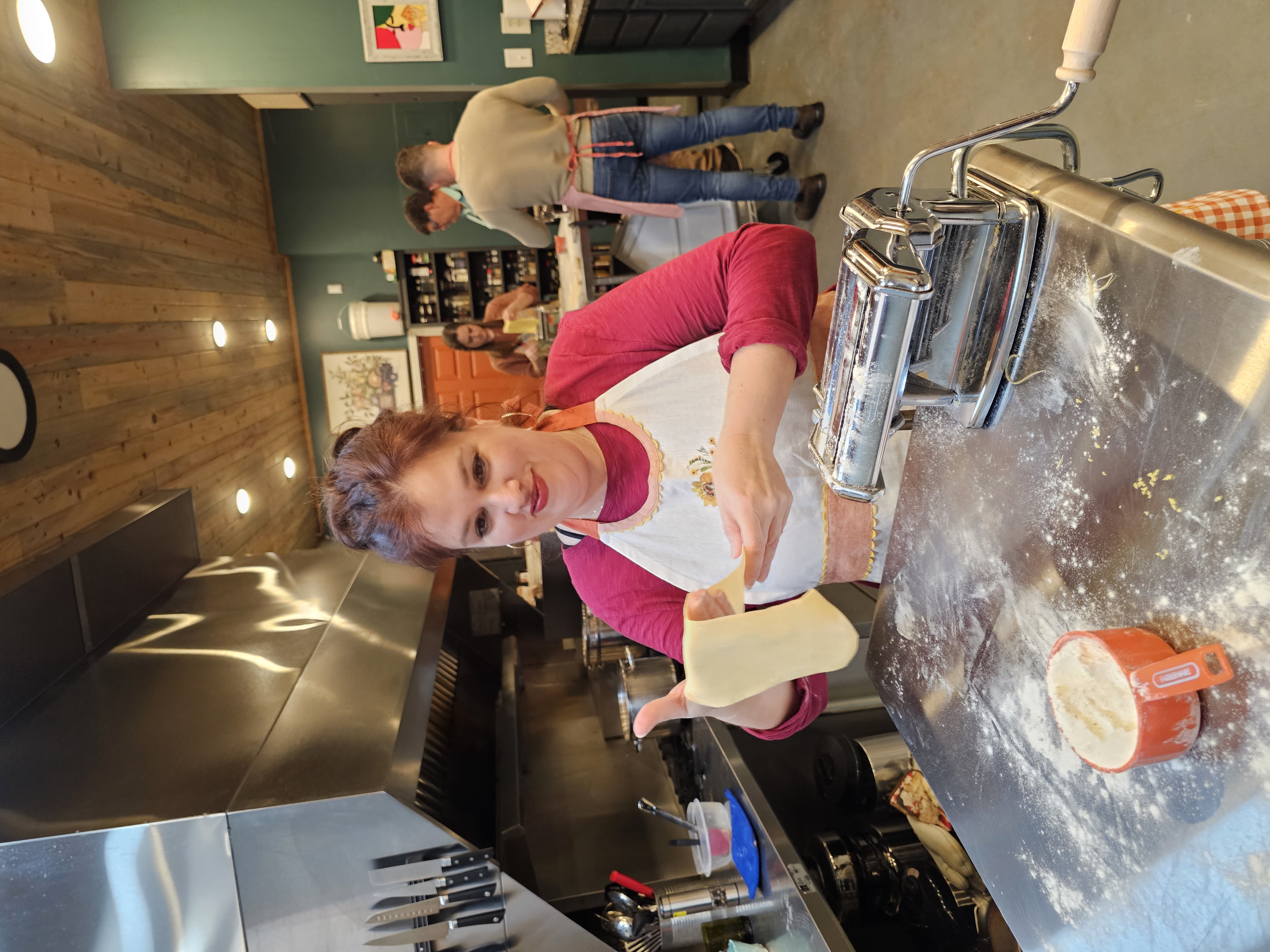
An Urbana Farmstead class participant makes pasta.
What is your ultimate goal?
The core of everything is this Mediterranean lifestyle. I hope my work lives on with the connection between the farm, food production, and the table. That's probably going to have to be one of the books I write next: that connection to the table. It's the place where we meet people, and it's the lowest common denominator. We can meet at the table, and we're all equal. I love that. That's the work I want to continue cultivating: nourishing and nurturing.
Whether you come and book a private event, have a high tea, or are in one of my classes, we eat together no matter what. You come and take a class. I will teach you how to make pasta, and then we will eat the pasta together. I could just teach you how to make pasta, but again, there's no closure. There's not the most important part of it because just making the food is not it. I want to keep connecting the food, the farm, the table, and the community.
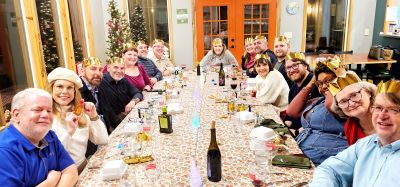
Everything ultimately connects to gathering around the table.
If you enjoyed this article, consider subscribing to my newsletter for more content and updates!
